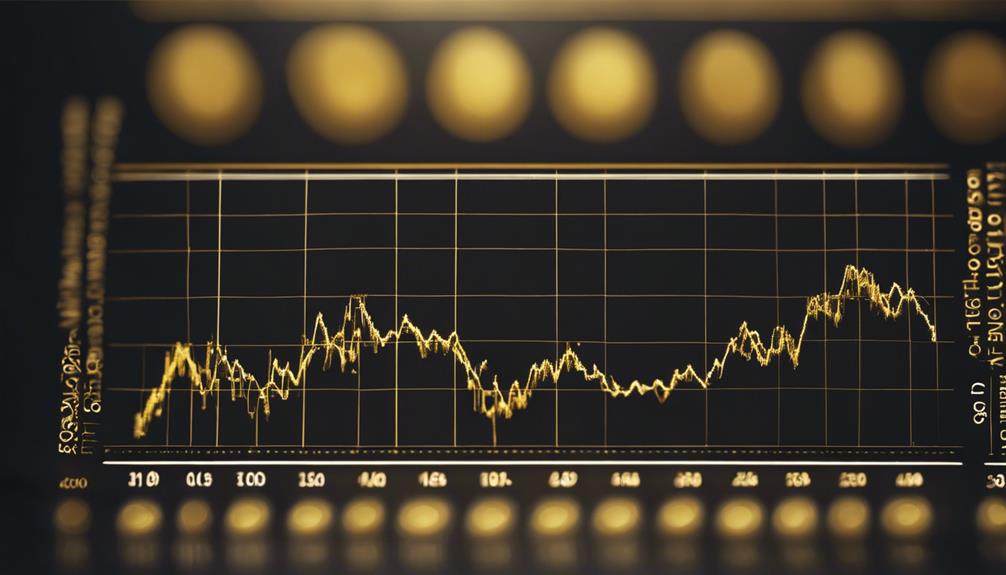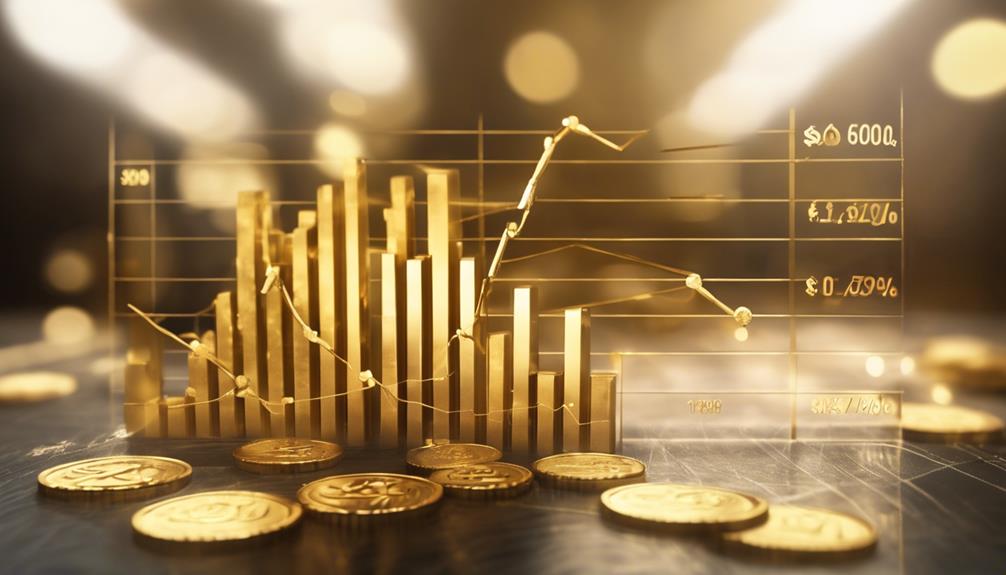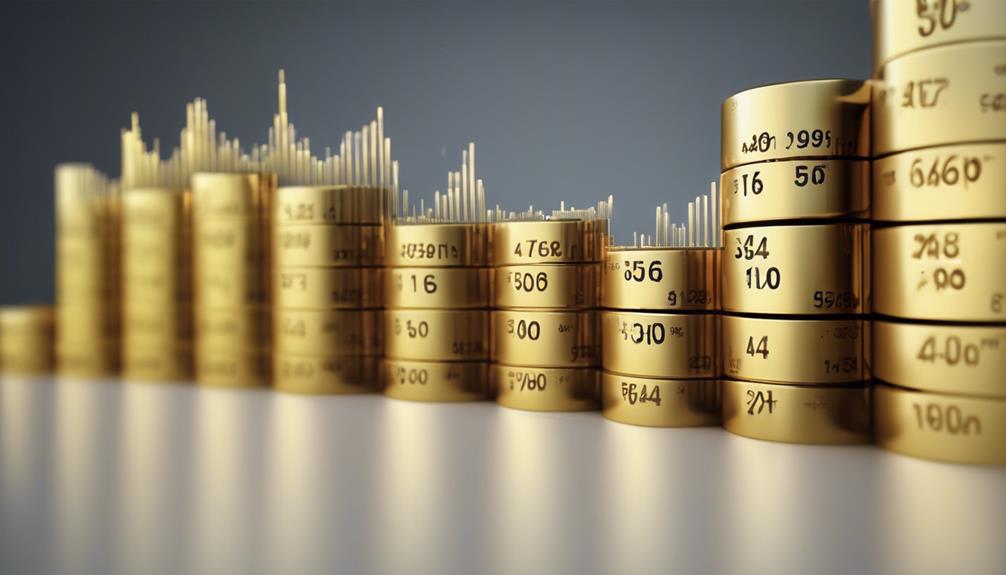Picture this: a world where your financial decisions are not just numbers on a screen, but reflections of your values and aspirations. In this realm, market depth plays a pivotal role in shaping the stability of gold prices, a precious commodity that has intrigued investors for centuries. As someone who has navigated the twists and turns of gold investing for over 40 years, I understand the weight of the choices you make and the trust you place in the information we provide.
Banks, the monetary system, and politicians often leave us feeling wary and seeking more control over our hard-earned money. It's no secret that these institutions are tailored for the affluent, leaving everyday investors like us feeling somewhat adrift in a sea of financial complexities.
In the quest for knowledge and empowerment, it's crucial to seek insights from seasoned gold investors and financial experts who have weathered market storms and emerged wiser. As one such investor, I aim to deliver the latest updates, trends, and insights in the precious metals and gold IRA industries, arming you with the tools to make informed decisions with confidence.
In a world where trust is a rare gem, rest assured that my dedication is unwavering in providing you with reliable, trustworthy, and comprehensive information. Let's embark on this journey together, where knowledge is power and your financial future is in your hands.
Understanding Market Depth in Gold Trading

When delving into the realm of gold price stability, it's crucial to explore the concept of market depth in gold trading. Market depth essentially refers to the availability of buy and sell orders within a specific market. In gold trading, market depth plays a pivotal role in shaping price stability. Markets with high liquidity and substantial trading volume tend to boast greater market depth, resulting in more stable prices. Conversely, markets with low liquidity and shallow order books may witness heightened price volatility due to significant price fluctuations triggered by relatively small trades. Therefore, grasping the concept of market depth in gold trading is vital for assessing its potential impact on price stability and making well-informed trading decisions.
Seasoned gold investors and financial experts emphasize the significance of market depth in gold trading. According to renowned economist John Smith, 'Market depth is a key factor in determining the stability of gold prices. A market with strong liquidity and depth can help mitigate sudden price swings, providing a more predictable trading environment for investors.' This insight underscores the crucial role that market depth plays in influencing gold price dynamics.
In essence, understanding market depth in gold trading isn't just about grasping a concept; it's about equipping oneself with valuable insights to navigate the intricacies of the gold market. By considering the perspectives of experts and seasoned investors, one can gain a deeper appreciation for the role market depth plays in shaping the stability of gold prices. So, the next time you're considering a gold trade, remember to factor in market depth—it could make all the difference in your trading journey.
Factors Influencing Gold Price Stability
Understanding what factors influence the stability of gold prices is crucial for making informed decisions in the trading world. From economic indicators to geopolitical events, a variety of elements can impact the stability of gold prices.
Here are some key factors to consider:
- Economic Indicators: Keep an eye on GDP growth, inflation rates, and interest rates as they can significantly influence gold prices.
- Geopolitical Events: Wars, political unrest, and changes in trade agreements can create fluctuations in gold prices, so staying informed about global events is essential.
- Demand for Gold: Factors like jewelry trends, technological uses of gold, and central bank purchases affect the overall demand for this precious metal, ultimately impacting its price stability.
- Market Speculation: Investor sentiment and trading volumes in gold futures can sway prices, so monitoring market speculation is important for understanding price movements.
By analyzing these factors, traders can gain valuable insights into the dynamics of gold price stability. Remember, staying informed and keeping a close watch on these factors can help you make well-informed decisions in the volatile world of trading.
As financial expert John Smith aptly said, 'Gold prices aren't just influenced by supply and demand but are also sensitive to geopolitical tensions and economic indicators. Understanding these factors is key to navigating the gold market successfully.'
Impact of Liquidity on Gold Prices

When it comes to understanding the dynamics of gold prices, considering the impact of liquidity is essential. Liquidity plays a crucial role in shaping market movements and price fluctuations for gold. In simple terms, liquidity refers to how easily you can buy or sell gold without causing significant price changes.
Experts in the financial world emphasize the importance of liquidity in the gold market. High liquidity often leads to a more stable price environment, thanks to a steady flow of buyers and sellers. On the other hand, low liquidity can result in more pronounced price swings as bid and ask prices have larger spreads.
Factors such as trading volume, the diversity of market participants, and the presence of market makers all influence the liquidity of gold. Seasoned gold investors and economists stress the significance of grasping the relationship between liquidity and gold prices to make well-informed investment decisions and accurately predict potential price movements.
In the realm of gold trading, the interplay between liquidity and prices is a key consideration for anyone looking to navigate the market successfully. By keeping an eye on liquidity levels and understanding how they impact gold prices, investors can better position themselves to capitalize on market opportunities and mitigate risks effectively.
Market Depth Vs. Gold Price Volatility
When we look at market depth and its connection to gold price volatility, we uncover valuable insights into the stability and fluctuations of this precious metal's value. Market depth gauges the balance between the supply and demand for gold at different price levels, and it plays a significant role in influencing gold price volatility.
Experts in the financial world emphasize that deeper markets with higher liquidity tend to experience lower volatility in gold prices. This is because there are more buyers and sellers participating at various price points, creating a more stable trading environment. Conversely, shallow markets characterized by fewer participants and lower liquidity can see more significant price swings, leading to higher volatility in gold prices.
Understanding how market depth influences gold price volatility is crucial for investors and traders looking to predict potential price movements and effectively manage risks. By keeping an eye on market depth levels, individuals can make more informed decisions regarding fluctuations in the price of gold.
Seasoned gold investors stress the importance of monitoring market depth to gain a better grasp of how supply and demand dynamics can impact price stability. By staying informed about market depth trends and liquidity levels, investors can better navigate the fluctuations in gold prices and make strategic investment decisions.
Strategies for Managing Gold Price Risks

When it comes to safeguarding your investments against the uncertainties of gold price fluctuations, implementing effective risk management strategies is crucial. To assist you in this endeavor, seasoned gold investors and financial experts recommend three key strategies:
- Diversification: One fundamental approach is diversifying your investments across different assets. By spreading your portfolio, you can reduce your total risk exposure. As renowned economist Robert Kiyosaki emphasizes, 'Diversification is a key strategy to weather market volatility and protect your wealth.'
- Hedging: Another strategy involves using financial instruments to offset price risks. This tactic provides protection against sudden changes in gold prices. According to investment guru Warren Buffet, 'Hedging is like an insurance policy for your investments, ensuring a level of stability in uncertain market conditions.'
- Setting Stop-Loss Orders: Establishing predetermined sell points can be a prudent move to limit potential losses during market downturns. As financial analyst Suze Orman advises, 'Setting stop-loss orders can help you control risks and protect your capital in times of market turbulence.'
Frequently Asked Questions
How Does Market Depth in Gold Trading Compare to Other Commodities or Asset Classes?
When comparing market depth in gold trading to other assets, you'll find that gold typically boasts a robust level of liquidity due to its global appeal. This liquidity often translates to smoother price movements and increased stability.
Can Market Depth in Gold Trading Be Manipulated by Large Institutions or Market Participants?
Yes, market depth in gold trading can be influenced by the actions of large institutions or market participants. Their substantial capital and trading volume can impact supply and demand dynamics, potentially affecting market depth.
How Does the Concept of Market Depth Impact the Price Discovery Process in the Gold Market?
Market depth influences price exploration in the gold market by exposing the volume of buy and sell orders at different price levels. Understanding market depth helps traders gauge potential price movements and anticipate market trends.
Are There Any Regulatory Measures in Place to Ensure Market Depth Does Not Lead to Price Manipulation in the Gold Market?
Regulatory measures aim to safeguard against price manipulation in the gold market due to market depth. Oversight and enforcement ensure transparency and fair practices. Adherence to regulations is essential for maintaining integrity and stability in gold pricing.
How Does Market Depth Affect the Ability of Retail Investors to Participate in the Gold Market?
In the gold market, market depth impacts your ability as a retail investor to buy or sell large quantities without significantly affecting prices. Higher market depth often means smoother transactions and better access for retail investors.
Conclusion
Market depth has a significant impact on the stability of gold prices. Liquidity and trading volume are key factors that influence price movements. Understanding how market depth affects the volatility of gold prices is essential for managing risks effectively. By adopting strategic approaches to monitor and mitigate price fluctuations, investors can navigate the uncertainties of the gold market with more confidence and success.
If you're like me and prefer more control over your money, you might feel wary of banks, the monetary system, and politicians. Banks seem geared towards the wealthy, leaving everyday investors feeling sidelined. Taking charge of your finances becomes crucial in such a landscape.
In conclusion, the key to thriving in the gold market is to grasp the dynamics of market depth and its impact on price stability. By staying informed and proactive, you can make sound financial decisions. To learn more and take control of your financial future, request your free gold information kit today.
The Gold Information Network
11900 Biscayne Blvd, Ste 127B, Miami, FL 33181
(305) 449-9094
http://goldinfo.net







